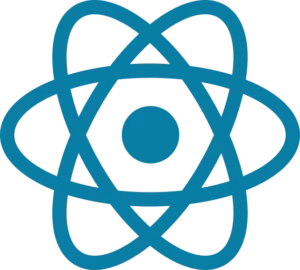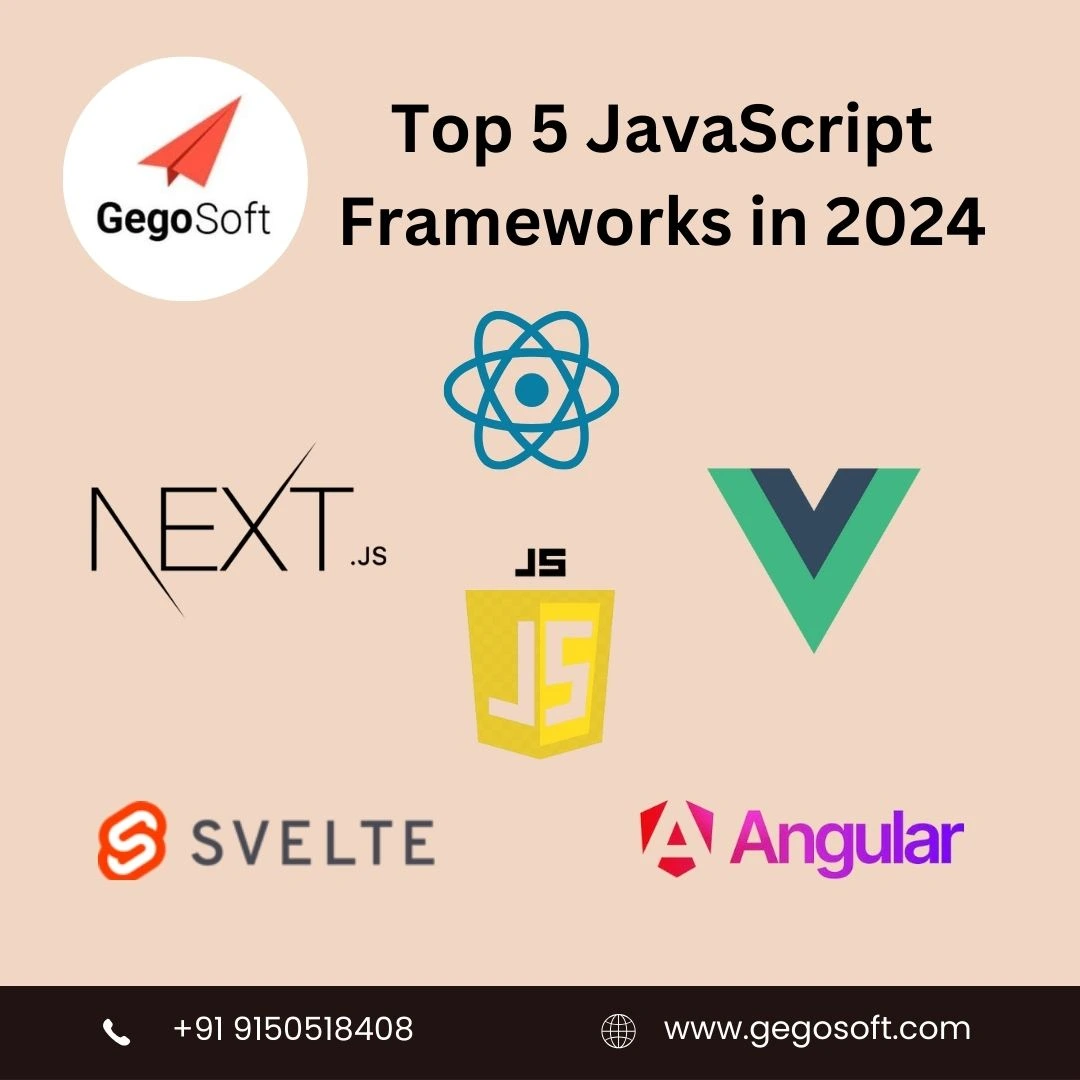As we Complete 2024, the JavaScript ecosystem continues to evolve, offering developers a diverse range of powerful frameworks like React, Vue, Svelte, Angular, and Next.js. Each framework brings unique strengths to the table, catering to different application needs. However, with continuous innovation comes the challenge of staying ahead of the curve, especially with 2025 on the horizon. This blog delves into the top 5 JavaScript frameworks dominating the landscape in 2024, their standout features, and the obstacles they face in remaining relevant in an ever-changing tech world.
1. React.js

Why It Shines
With over 200k stars on GitHub, React.js remains a top choice for developers due to its simplicity, flexibility, and robust ecosystem. Its virtual DOM ensures high performance, and features like React Hooks enhance functional programming capabilities.
Challenges Ahead
- Server-Side Rendering (SSR) Competition: Frameworks like Next.js (built on React) might overshadow React itself by offering better server-side capabilities.
- Evolving Ecosystem: Staying updated with competitors’ features while maintaining a lightweight core will be crucial.
2. Vue.js

Why It Shines
Vue.js is celebrated for its progressive approach, ease of learning, and flexibility. With over 210k GitHub stars, Vue 3 continues to gain traction, especially in Asia. Its composition API brings Reactivity to the forefront, making it a favorite for modern web apps.
Challenges Ahead
- Enterprise Adoption: Competing with React and Angular in the enterprise space is still an uphill battle.
- Tooling Maturity: While tools like Vite are game-changers, Vue must continue to refine its ecosystem to match industry demands.
3. Next.js
![]()
Why It Shines
Next.js, with 110k+ GitHub stars, has become the go-to framework for server-side rendering and static site generation. Features like middleware and API routes make it a versatile choice for full-stack development.
Challenges Ahead
- Complexity in Scaling: As Next.js evolves, ensuring simplicity without overwhelming developers with configurations could be a challenge.
- Performance Race: Competing with frameworks like SvelteKit in terms of speed and efficiency will require innovation.
4. Svelte and SvelteKit


Why It Shines
Svelte, with over 70k GitHub stars, stands out for its compiler-based approach, producing highly optimized and fast applications. SvelteKit builds on this, offering a comprehensive toolkit for modern app development.
Challenges Ahead
- Community and Adoption: While growing, Svelte’s ecosystem still lags behind React and Vue.
- Enterprise Trust: Convincing enterprises to migrate or adopt Svelte at scale is a key challenge.
5. Angular

Why It Shines
Angular, backed by Google, remains a powerhouse for enterprise-level applications. Its opinionated structure and TypeScript integration make it ideal for large-scale projects with complex requirements.
Challenges Ahead
- Developer Experience: Angular’s steep learning curve continues to deter new developers.
- Competing Frameworks: As lightweight frameworks gain popularity, Angular must adapt to avoid being labeled as too heavy for modern use cases.
Challenges Toward 2025: A Look Ahead
- Performance Optimization: Frameworks must focus on load times, especially as users demand instant interactions on mobile and desktop devices.
- AI Integration: As AI-driven applications become mainstream, frameworks need to offer seamless integration capabilities with AI/ML tools.
- Sustainability: Reducing JavaScript bloat and enhancing energy efficiency in coding practices will gain importance.
- Interoperability: Ensuring compatibility with emerging web standards, like WebAssembly, is vital for staying future-proof.
- Community and Documentation: A growing and active developer community backed by comprehensive, up-to-date documentation will differentiate leaders from laggards.
FAQ’s – Top 5 JavaScript frameworks in 2024
1. What are the top 5 JavaScript frameworks in 2024?
The leading JavaScript frameworks in 2024 are React.js, Vue.js, Next.js, Svelte (with SvelteKit), and Angular. Each offers unique features catering to diverse application needs.
2. Which JavaScript framework is best for beginners?
Vue.js is often recommended for beginners due to its gentle learning curve, straightforward documentation, and simplicity. React.js is also a popular choice for those looking to transition into professional development roles.
3. Why is Next.js gaining so much popularity?
Next.js is popular for its server-side rendering (SSR), static site generation (SSG), and full-stack capabilities. It simplifies building high-performance web applications, making it a favorite among developers.
4. How does Svelte differ from other frameworks like React or Vue?
Svelte uses a compiler-based approach, converting code into efficient vanilla JavaScript at build time. This eliminates the need for a virtual DOM, resulting in faster performance and smaller bundle sizes.
5. Is Angular still relevant in 2024?
Yes, Angular remains relevant, especially for enterprise-level applications requiring a structured and robust framework. Backed by Google, it continues to evolve with new features and tools.
6. What are the key challenges for JavaScript frameworks in 2024?
Key challenges include improving performance, integrating AI/ML tools, reducing JavaScript bloat, achieving better interoperability with WebAssembly, and enhancing the developer experience.
7. Which framework should I choose for large-scale enterprise applications?
Angular is a strong choice for large-scale enterprise applications due to its opinionated structure, TypeScript support, and comprehensive tooling.
8. What is the future of React.js beyond 2024?
React.js is expected to evolve with new features focusing on performance, server-side rendering, and enhanced functional programming. Its strong community ensures continuous updates.
9. Can I use Svelte for enterprise projects?
While Svelte is growing in popularity, it still faces adoption challenges in the enterprise space. However, with SvelteKit and its efficient performance, it’s becoming increasingly viable for enterprise applications.
10. Are JavaScript frameworks integrating AI tools?
Frameworks are beginning to explore AI integration, but developers often use third-party libraries for specific AI/ML tasks. Seamless integration with AI tools is likely a significant trend for the future.
Final Thoughts
2024’s JavaScript frameworks are equipped with cutting-edge features that empower developers to build faster, more efficient, and scalable applications. However, staying ahead of challenges like AI integration, developer experience, and performance optimization will be key as we march toward 2025. Whether you’re team React, Vue, Svelte, Angular, or Next.js, the future of JavaScript frameworks promises exciting developments and fierce competition.

